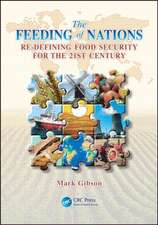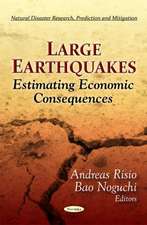Shared Risk – Complex Systems in Seismic Response
Autor Louise K. Comforten Limba Engleză Hardback – 14 sep 1999
Through a comprehensive analysis of earthquake case studies, Louise Comfort shows how communities and organizations cope with dynamic and unpredicted events. Drawing upon the concept of shared risk, she examines the self-organizing processes by which communities act in their own interest to mitigate and reduce risk. Placing shared risk within a theoretical framework consistent with disaster situations, Professor Comfort presents policy-relevant analysis of disaster response systems.
The practical, theoretical and methodological issues involved in the study of shared risk are addressed in the first part of the book which also sets this problem in the global context of seismic risk. This is followed by comparative analysis of eleven different case studies of rapidly evolving response systems following earthquakes. The final part of the volume compares different classes of response systems and presents a preliminary model for a sociotechnical system to mitigate seismic risk and facilitate response when earthquakes occur.
Examining the relationship between information, action and theory and theories of organizational adaptation, this book will be applicable to a wide range of organizational change efforts, as well as being a strong and distinctive contribution to the literature on seismic policy and crisis management.
Preț: 1067.65 lei
Preț vechi: 1386.56 lei
-23% Nou
Puncte Express: 1601
Preț estimativ în valută:
204.32€ • 221.86$ • 171.63£
204.32€ • 221.86$ • 171.63£
Carte tipărită la comandă
Livrare economică 23 aprilie-07 mai
Preluare comenzi: 021 569.72.76
Specificații
ISBN-13: 9780080432113
ISBN-10: 0080432115
Pagini: 356
Dimensiuni: 155 x 234 x 508 mm
Greutate: 0.67 kg
Editura: Emerald Publishing
ISBN-10: 0080432115
Pagini: 356
Dimensiuni: 155 x 234 x 508 mm
Greutate: 0.67 kg
Editura: Emerald Publishing
Cuprins
Preface. Acknowledgements. List of tables. List of figures. Part I: Shared Risk in Theory: Context, Concept and Methods of Analysis. Shared risk and self-organizing processes. Models of transition in complex, dynamic environments. Measuring change in nonlinear social systems. The 'Edge of Chaos': creative response in dynamic environments. Part II: Shared Risk in Practice: The Evolution of Response Systems. Nonadaptive systems: San Salvador, Ecuador and Armenia. Emergent adaptive systems: Mexico City, Costa Rica, and Erzincan, Turkey. Operative adaptive systems: Whittier Narrows, California; Loma Prieta, California; and Maharashtra, India. Auto-adaptive systems: self organization or dysfunction in Northridge, California and Hanshin, Japan. Part III: Future Strategies: Managing Risk in Complex, Adaptive Systems. Adaptation to disaster: evolving response systems. Sociotechnical systems and the reduction of global risk. Bibliography. Appendices. Index.
Recenzii
Gene Rochlin, University of California, USA
This is a unique project that combines a wealth of informative, in-depth fieldwork with a highly original approach. The author's research on and analysis of responses to recent earthquakes is unparalleled in the existing literature.
L. Douglas Kiel, University of Texas at Dallas, USA
An excellent and accessible application of the sciences of complexity to the challenges of shared risk.
Douglas Paton, Massey University, New Zealand
...this book provides an innovative and comprehensive analysis of a highly complex topic....text contents provide a practical tool for emergency planning for seismic crisis.
The Australasian Journal of Disaster and Trauma Studies
This is a unique project that combines a wealth of informative, in-depth fieldwork with a highly original approach. The author's research on and analysis of responses to recent earthquakes is unparalleled in the existing literature.
L. Douglas Kiel, University of Texas at Dallas, USA
An excellent and accessible application of the sciences of complexity to the challenges of shared risk.
Douglas Paton, Massey University, New Zealand
...this book provides an innovative and comprehensive analysis of a highly complex topic....text contents provide a practical tool for emergency planning for seismic crisis.
The Australasian Journal of Disaster and Trauma Studies














